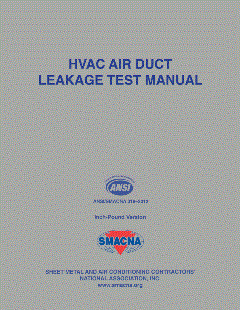Coil cleaning.
Glamorous? Hardly. If someone ever writes “HVAC: The Musical,” the number about coil cleaning is probably the song that gets cut for time.
Worth it for system performance? Absolutely.
Cleaning coils likely beats work in a stuffy attic or an unappealing crawl space. On the other hand, not many other maintenance tasks make it so easy to inadvertently do more harm than good, which does not exactly add to its allure.
A proper cleaning can make a real difference in how well a system operates, and if neglected, unnecessary and more expensive problems can result. So the job itself falls under “responsible maintenance.” However, a contractor can find longer-term business potential tucked inside a coil cleaning call.
Smaller Channels, Fewer Chemicals
As familiar as the task may be, coil cleaning still has room for improving technique, thanks to the twin dynamics of evolving technology and updated regulations.
“The introduction of microchannel coils has changed the way we approach coil cleaning,” said Matt Rafferty. Rafferty is general manager, service, for Philadelphia-area Burns Mechanical.
While Rafferty noted that manufacturers are steering contractors away from some chemical cleaners since they react harshly with the aluminum microchannels, Jeff Vineyard pointed out that stricter environmental regulations are crowding some old materials out of the process, too. Vineyard is service manager for CMI Mechanical in Denver.
“Gone are the days of spraying a foaming coil cleaner on and spraying it off with a garden house,” he said.
Rafferty and Vineyard agreed on a couple of other things in this area: High-flow, low-pressure nozzles have become the default equipment of choice to prevent damaging the fine fins, and sometimes, adjustments are necessary.
“We will still use alkaline cleaners on traditional copper tube/aluminum fin coils” for dirtier cases, Rafferty said.
Vineyard said that whenever his team might need to break out the chemicals in a situation like a cleaning on a rooftop, CMI will take other precautions that would not have been around a generation ago.
“In that scenario, we would erect spill booms around the drains to prevent effluent from going down storm sewers, and capture it for proper disposal.”
General manager, service Burns Mechanical
Tips for Coil Cleaning
Asked for procedural advice gleaned from experience or insight, these contractors offered a couple of tips.
“If the unit configuration allows for it,” Rafferty explained, “our team cleans from the leaving air side of the coil through to the entering side first, followed by an external wash down.”
While it means more work, he said that this approach has proven to free up the most debris.
The other tip happened to earn a mention from both professionals.
“One point that is often overlooked is checking for split — or multilayer — coils. Dirt and debris will accumulate between the layers and cannot be removed completely with chemicals or a surface wash,” Vineyard said.
He said that as a result, “you must disassemble the equipment far enough to split the coils and wash the debris from the void between the layers.”
As Rafferty pointed out, that means that techs must stay in the habit of checking on whether or not there are two different coils to deal with.
Not so much a secret as a reminder, Vineyard also mentioned that there is a flip-side risk of being overly concerned about protecting the fins: insufficient cleaning. He sees that happens when techs don’t want to get too close to the coil.
Along with using the lower-PSI pressure washer, he said, “aiming the stream perfectly parallel to the coil fins or channels” should remove as much as possible while still minimizing the chances of damaging anything.
Frequency Factors
Some recommendations may boil down coil cleaning frequency to a simple rate across the board, but as with so many things in life, the truth about an optimum strategy is that it depends.
“At least yearly” can be the simplest rule of thumb for condenser coils. However, Vineyard said that “can change to two and sometimes three times a year, depending on environmental factors in a customer’s local area like soot/particulate matter in the air and cottonwood seeds.”
For evaporator coils, Vineyard recommends a minimum of biennial cleaning. But again, changing circumstances — in this case, those surrounding COVID-19 — have led CMI Mechanical to recommend a cleaning and disinfection “at least with every quarterly preventive maintenance,” noting that monthly wouldn’t hurt if the customer prefers.
Rafferty concurred that biennial cleaning should do for evaporator coils. However, he added the caveat that poor filter maintenance may in turn necessitate more frequent cleanings.
On the condenser coil side, Burns Mechanical recommends annual cleaning, or semi-annual cleaning in areas with high pollen and dust.
“When you shift to continuous cooling applications,” such as data centers, Rafferty said that “the frequency jumps to a minimum of semi-annually” again with the possibility of doubling that for environments with more pollen or dust.
Customer Maintenance, Too
The heating and cooling business by nature deals more with how someone feels than how something looks. That can limit the opportunities to connect with a customer on a visual level about the value of their investment in service or equipment.
Coil cleaning offers just this sort of chance for contractors who take the effort to make it happen.
Often for new customers, or if some significant circumstance has changed on an existing account, “we will bring the customer to the equipment to show them before and after, and sometimes the debris trapped between the coils during the coil wash,” Vineyard said.
Vineyard said that in Colorado, the condenser coils have the chance to make a greater impact since a few factors — like lower humidity — tend to limit biological growth on the evaporator coils.
Rafferty commented that just taking a picture will suffice for customers who already appreciate dirty coils’ impact on heat transfer.
For others, he sometimes employs the analogy of a clothes dryer and the increasingly full lint trap’s effect on performance.
“With a dirty condenser coil,” he said, “your head pressure goes up, causing the system to work much harder to do its job. When the coil is dirty enough, the head pressure safety trips, and then you have no cooling. Both things can be fixed easily, but they put unnecessary wear and added cost to a system that would otherwise run like a top.”
Either way, some details of the task have changed and its dirt-collecting targets remain fragile. The biggest coil cleaning upside for contractors may reside in that conversation with the customer after a good cleaning. As CMI Mechanical puts it, educating a customer makes for a better customer.
“They are more likely to buy a product or repair,” Vineyard said, “and it builds trust by showing them they are getting a tangible product and not just a sales pitch.”
Hail the Add-On Sale

EXPENSIVE IMPACT: Excessive water pressure during coil cleaning isn’t the only thing that can damage a condenser’s fins. Owners in certain areas may appreciate the chance to protect equipment from tiny ice missiles.
Coil cleaning is not the only thing that can damage fins in a condenser. Contractors in certain areas of the country should keep another scenario in mind, along with its potential add-on revenue — and mentioning fin damage related to incorrect cleaning may offer the perfect segue for customers with vulnerable equipment.
Jeff Vineyard, service manager for Denver’s CMI Mechanical, mentioned the risk and repercussions.
“We have an industrial client who has many HVACR systems throughout their plant,” Vineyard said. “We are in an area that is plagued by hail every year, and they opted to not install hail guards when they built their plant. Because of this, nearly every condenser has a major percentage of fins bent over. So we are constantly combing fins and replacing compressors and sometimes entire units in what should otherwise be a premature timeframe.”
This sort of enhancement may feel more like essential service than an “extra” when going without in some regions can mean new compressor or unit purchases that are unbudgeted and ahead of schedule.











